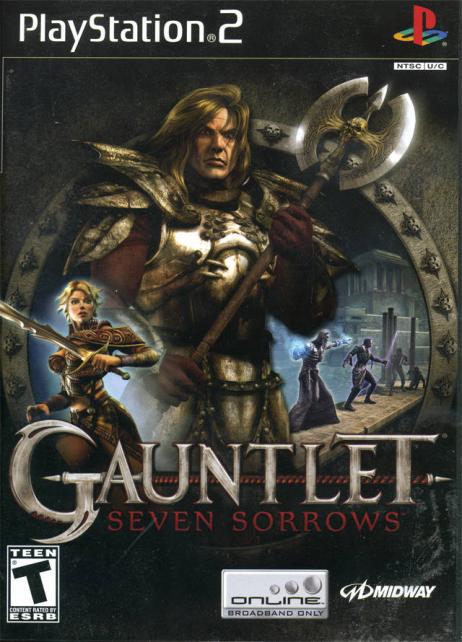Gauntlet: Seven Sorrows Interview
-
Category: InterviewsHits: 8122

Article Index
Page 2 of 3
GB: Tell us a bit about how inventory management will work in Gauntlet: Seven Sorrows. Will players be required to drop items to trade them, or will there be some sort of a trade window? Additionally, how will buying/selling items at a vendor work? Josh: We've put a lot of thought into our inventory management because we've seen a lot of games like this be quickly ruined by bad interfaces. Our quick inventory system allows all four players to browse their inventory at the same time and still see what's going on in the game. If a player wants to, he or she can do a (give), which simply gives an item freely to another player. We also have a full barter screen where players can do secure trades of up to eight items at a time. The quick-chat system allows players without headsets to tell other players what equipment they are looking for.
Buying at vendors in story mode occurs at city hubs. It's not much different from any other action RPG. In advance mode, all of the characters can (virtually) access the stores in the hubs at the end of every stage. We don't want inventory management to be a chore.
GB: How many different weapons will be available for players to specialize in? What advantage will there be to be specialized in a weapon vs. using it as one of your "learned" styles?
Josh: There are six total weapon types with many different weapons under each type: Great Cleave, Great Pierce, Cleave, Pierce, Magic, and Unarmed. Each type covers a set of moves the character can do with any weapon of that type. Each character starts out being fairly skilled in their main weapon style and can expand the moves of two other types. For example, the warrior starts out with a lot of moves in the Great Cleave style. Players can finish out that tree or build up the Great Pierce and Cleave trees. On the other end of the spectrum, the wizard starts out with many Magic attacks. He can build up the Pierce and Cleave trees.
Specializing in a character's primary style allows the player to unlock every move in their set. Branching out into other styles gives the player increased flexibility because different styles are better for different situations. A simple right or left press on the DPad instantly switches styles, giving the player the opportunity to build long combos.
GB: How many different spells and/or skills will be available in Seven Sorrows, and how will these be broken down into the six different classes? Any particular favorites you can tell us about? Additionally, what sort of team-oriented "junction" skills can we expect to see?
Josh: Initially, every character type had a huge set of spells/special abilities. However, we quickly discovered that this made our control scheme very, very complicated. Complication is kind of (anti-Gauntlet), so we went in the opposite direction. Every character class has a unique class skill that functions much like a super attack. For the valkyrie, it is Flock, which calls down ravens on her enemies. For the warrior, it is Retribution, a defensive ability that allows players to mete out damage on attackers as they strike him. Really, the diversity between characters comes in what weapon skills/combos they learn and what equipment they find.
Currently, we have twelve Junction Skills in the game. They are very easy to execute, but demand teamwork to use well. Players who set down too many seals or seals in bad locations can make a junction pattern ineffective. The effects are all area effect and range from healing zones to circles of hail that rain down on enemies. One of the more complex patterns is a four-seal junction called Annihilate. It summons a column of floating discs that fly through enemies when they enter the circles around them.
GB: Will there be a quest system in the game, perhaps even with class-specific quests for each of the game's six characters? If so, are all of these quests part of the main storyline or will players be able to accept any side quests to earn extra experience or treasure?
Josh: We tried to approach Seven Sorrows as an action game, primarily. In advance mode, players can choose to do areas in whatever order they want, but within areas, the maps flow very linearly. We wanted to spend as much time as possible on high quality core content. Overall, quests are more directly related to tasks at hand. However, we often have side arenas that are more challenging than the core arenas. These areas often give more treasure as rewards for completion.
In the story mode of the game, the characters always have goals and motivation wherever they go. The big quests of the game involve the characters undoing the seven sorrows of a powerful, deranged emperor. Most of the subsequent little quests are incidental to reaching that goal. We didn't want the player to feel like they were (doing quests) as much as just playing through the logical flow of the story and area. If it ever feels like a chore, we've failed.


